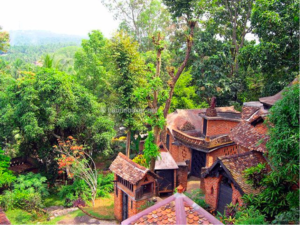Safeguarding our cultural heritage while embracing sustainability is a harmonious endeavor that requires careful consideration and innovative solutions. Architects engaged in heritage preservation face a unique set of challenges in this case, which range from balancing environmental concerns with aesthetic design to navigating cost constraints and regulatory hurdles. Yet, amidst these challenges lies an opportunity to explore eco-friendly construction materials that not only preserve our heritage but also contribute to a greener future.
The Intersection of Sustainability and Heritage Preservation
Preserving historical landmarks and architectural wonders involves more than just conserving their physical structures; it requires a commitment to environmental stewardship and sustainable development. Integrating eco-friendly practices into heritage projects not only reduces their carbon footprint but also enhances their resilience over time. Furthermore, embracing sustainable measures in the heritage sector aligns with broader efforts to promote sustainable development. Historical landmarks are not only cultural treasures but also valuable assets that contribute to the social, economic, and environmental well-being of communities. By preserving these landmarks in a sustainable manner, we can ensure that they continue to enrich the lives of people and support the vitality of local economies for years to come.
Challenges in Heritage Preservation
Architects embarking on sustainable heritage projects encounter several challenges:
- Balancing Environmental Concerns with Aesthetics: Striking a balance between preserving the historical integrity of a site while implementing sustainable features and can be complex. On top of that, architects also need to maintain the visual appeal of the building under consideration.
- Cost Considerations: Implementing eco-friendly practices often comes with higher upfront costs, necessitating careful budgeting and cost-effective solutions. Limited availability and high costs of eco-friendly materials further complicate the design process, as architects strive to source sustainable materials that meet both performance standards and sustainability criteria.
- Regulatory Hurdles: Building codes and regulations may not always align with green design principles, posing challenges for architects seeking to integrate sustainable features. Architects must navigate regulatory requirements while advocating for environmentally conscious design solutions, highlighting the need for policy changes to promote sustainable architecture.
- Spreading Awareness among Clientele: A lack of awareness and education among clients can impede the adoption of eco-friendly practices in building design. Architects may need to educate clients about the long-term benefits of green building and overcome resistance to sustainable design strategies. By fostering awareness and promoting the value of eco-friendly buildings, architects can drive positive change in the industry.
Benefits of Eco-Friendly Heritage Preservation
Despite these challenges, embracing eco-friendly construction materials in heritage projects offers numerous benefits:
- Reduced Carbon Footprint: By minimizing energy consumption and greenhouse gas emissions, eco-friendly heritage projects contribute to mitigating climate change.
- Resource Conservation: Sustainable materials and practices promote the efficient use of resources, reducing waste generation and conserving natural resources.
- Improved Indoor Air Quality: Non-toxic materials and adequate ventilation systems enhance indoor environmental quality, benefiting the health and well-being of occupants.
- Enhanced Biodiversity: Incorporating green spaces and native landscaping supports biodiversity conservation within urban areas.
- Community Engagement: Sustainable heritage projects can serve as educational hubs, fostering awareness and appreciation for environmental conservation and cultural heritage.
An exemplary illustration of sustainable construction practices can be found in the works of architect Laurie Baker. Baker’s own residence, Hamlet, is designed with emphasis on natural materials and passive cooling techniques, thus minimizing energy consumption and contributing to climate change mitigation. More than just a physical structure, Hamlet embodies Baker’s deep-seated belief in simplicity and contextually, showcasing the potential of eco-friendly construction practices in heritage preservation.
 The Hamlet (Source: https://lauriebaker.net/)
The Hamlet (Source: https://lauriebaker.net/)
Exploring Eco-Friendly Construction Materials
Now, let’s delve into some eco-friendly construction materials that architects can explore for sustainable heritage projects:
- Reclaimed Wood
Utilizing reclaimed wood from salvaged structures or responsibly managed forests reduces the demand for virgin timber and promotes recycling.
- Recycled Steel
Recycled steel not only conserves natural resources but also boasts high durability and structural integrity, making it an ideal choice for heritage restoration projects.
- Bamboo
Bamboo is a rapidly renewable resource that offers strength, versatility, and aesthetic appeal, making it suitable for various architectural elements.
- Rammed Earth
Rammed earth construction utilizes locally sourced soil and minimal energy, resulting in durable and energy-efficient structures that blend seamlessly with historical contexts.
- Cork
Cork, harvested from the bark of cork oak trees, is a sustainable material prized for its thermal and acoustic insulation properties, making it ideal for heritage conservation projects.
- Hempcrete
Hempcrete, made from hemp fibers and lime, is a lightweight and breathable material that regulates humidity levels and improves indoor air quality.
- Salvaged Bricks
Reusing salvaged bricks from demolished buildings not only preserves their historical character but also reduces landfill waste and carbon emissions associated with brick production.
Paving the Way for Sustainable Heritage Preservation
Incorporating eco-friendly construction materials into heritage preservation projects is not merely a choice; it’s a responsibility we owe to future generations. By embracing sustainability, architects can breathe new life into historical landmarks while safeguarding our planet for posterity.
References:
Darwish, Abdul. (2014). Eco-Friendly Buildings: the central factor in transitioning to a Green Economy. International Journal of Environment and Sustainability. 3. 10.24102/ijes.v3i1.445.
Pramod, G. (2023, December 2). Eco Friendly Building Materials – 20 Examples of the Latest Trend. The Architects Diary. https://thearchitectsdiary.com/eco-friendly-building-materials-20-examples-of-the-latest-trend/#:~:text=Mud%20Bricks%20%E2%80%93%20Adobe
